Top Ecommerce Automation Tools Shaping Online Retail in 2025
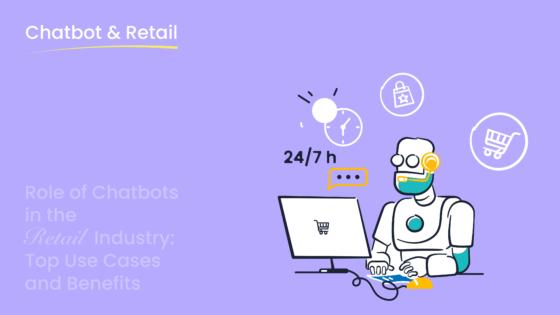
Ecommerce automation tools have become essential for online retailers in 2025. Rapid changes in ecommerce trends, such as the rise of AI, omnichannel strategies, and improved customer experience, drive digital business transformation and digital growth. According to recent data, 77.2% of ecommerce professionals use AI and automation daily, with nearly 40% investing $5,000–$50,000 annually in technology.
| Metric Description | 2025 Statistic | 2024 Statistic |
|---|---|---|
| Ecommerce professionals using AI and automation daily | 77.2% | 69.3% |
| Ecommerce professionals using at least six apps daily | 42.28% | N/A |
| Ecommerce professionals excited about AI (rating 8-10) | 55.3% | 45.6% |
| Ecommerce professionals spending $5,000-$50,000 annually on tech stack | Nearly 40% | N/A |
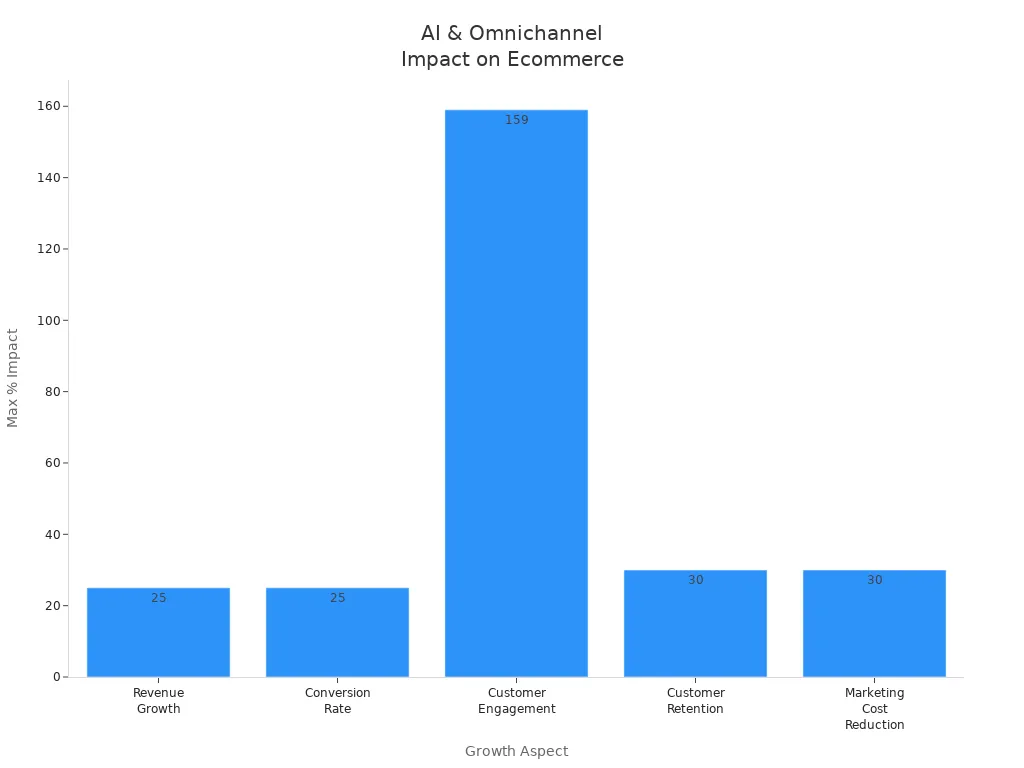
Sobot leads the future of online automation, offering Sobot AI solutions that help businesses enhance technology, streamline operations, and deliver a seamless experience.
Ecommerce Trends 2025
AI and Personalization
Artificial intelligence shapes the future of ecommerce by powering personalized shopping experiences. In 2025, 92% of businesses use generative AI to enhance online retail, making personalization a core strategy. AI assistants now handle up to 20% of ecommerce tasks, including product recommendations and customer service. These systems predict consumer behavior, offer tailored suggestions, and even adjust product detail pages in real time. For example, AI can suggest hiking boots before a planned trip or customize discounts based on shopping history. Companies using AI-driven personalization report a 25% increase in conversion rates and up to 50% better campaign ROI compared to traditional marketing methods. Sobot’s AI-powered solutions help brands automate customer interactions, analyze behavioral data, and deliver relevant experiences across channels, supporting digital growth and efficiency.
| Trend | Description & Supporting Evidence |
|---|---|
| AI-driven Personalization | 92% of businesses use generative AI for ecommerce personalization in 2025. |
| AI-powered Customer Service | AI enhances user experience and support across platforms. |
Omnichannel Experiences
Omnichannel experience stands out as a leading ecommerce trend. Customers expect seamless integration across online, mobile, and physical store channels. Research shows that omnichannel strategies improve customer satisfaction and retention by providing consistent access to shopping information. Retailers using unified commerce systems, like those supported by Sobot, reduce complexity and deliver a single source of truth for customer data. Innovations such as AR, social commerce, and warehouse automation further enhance the shopping journey. Companies adopting omnichannel approaches see higher sales and stronger loyalty, as customers enjoy flexibility and personalized experiences at every touchpoint.
Tip: Retailers who optimize omnichannel experiences can boost both planned and unplanned purchases, driving digital growth and long-term customer loyalty.
Security and Compliance
Security and compliance have become business-critical in 2025. Ecommerce businesses must comply with updated regulations like PCI DSS v4.0 and global privacy laws such as GDPR and the EU AI Act. The expansion of omnichannel ecommerce increases the attack surface, making robust security essential. Threats include AI-powered fraud, synthetic identities, and supply chain vulnerabilities. Recommended strategies include end-to-end encryption, behavioral biometrics, and continuous monitoring. Sobot’s secure, compliant solutions help brands protect customer data and maintain trust while supporting ongoing digital growth.
Ecommerce Automation Tools Overview
Key Categories
Ecommerce automation tools in 2025 cover a wide range of business needs. Companies use these tools to streamline operations, improve accuracy, and boost customer satisfaction. The main categories of automation tools help businesses manage inventory, marketing, customer service, accounting, and data analytics.
| Category | Definition & Key Functions |
|---|---|
| Inventory Management | Tracks inventory levels, manages shipments, updates stock counts, forecasts demand, and automates reordering to prevent stockouts. |
| Marketing Automation | Runs automated campaigns across email, SMS, and social media; manages posting schedules and engagement, freeing teams for strategy. |
| Customer Service Automation | Uses CRM tools and AI chatbots to automate lead management, support queries, order tracking, returns, and FAQs, improving response times. |
| Accounting Automation | Automates financial tasks like transaction entry, reconciliation, statement preparation, and bill payments for streamlined accounting. |
| Data Analytics Automation | Collects and analyzes customer data to predict behavior and sales trends, supporting decisions with automated insights. |
Retailers often choose all-in-one platforms that combine several of these categories. For example, Sobot offers customer service automation with AI chatbots, omnichannel support, and ticketing systems. These features help brands handle customer inquiries, automate responses, and provide 24/7 support. Sobot’s solutions also integrate with marketing and analytics tools, making it easier for businesses to manage multiple aspects of ecommerce from a single dashboard.
Note: Selecting the right mix of ecommerce automation tools depends on business size, sales channels, and customer needs. Companies should evaluate which categories will deliver the most value for their operations.
Integration Benefits
Integrating ecommerce automation tools brings measurable benefits to online retailers. Businesses report significant time savings, fewer errors, and improved efficiency. Automation reduces manual work, allowing employees to focus on growth and customer engagement.
| Benefit | Description |
|---|---|
| Time Savings | Automates order fulfillment, inventory updates, and notifications, freeing team time. |
| Accuracy & Error Reduction | Automated systems reduce manual data entry mistakes across platforms. |
| Scalability | Enables handling higher order volumes without extra staff. |
| Customer Satisfaction | Real-time updates and faster shipping improve buyer experience. |
| Cost Efficiency | Reduces manual labor, lowering operational costs over time. |
- Saves Time: Automation reduces repetitive tasks, freeing resources for strategic activities.
- Personalizes Customer Experience: Tailored messaging improves engagement and satisfaction.
- Increases Revenue: Optimized marketing campaigns lead to higher conversions and sales.
- Reduces Human Error: Streamlined processes minimize mistakes.
- Enhances Data Utilization: Better data collection and analysis support informed decisions.
Sobot’s unified platform demonstrates these benefits in action. For example, Michael Kors used Sobot to integrate customer service channels, automate responses, and connect marketing with support. This led to an 83% reduction in response time and a 20% increase in conversion rates. Companies that integrate automation tools also see improved inventory efficiency, simplified deliveries, and higher customer retention.
Tip: Integration can present challenges, such as connecting different systems or managing data quality. Businesses should plan carefully, involve key users, and align automation with long-term goals to maximize results.
Order Fulfillment Automation

Micro-Fulfillment Centers
Micro-fulfillment centers (MFCs) have transformed how online retailers deliver orders quickly and efficiently. These small, highly automated warehouses sit close to customers in urban areas. Their location reduces last-mile delivery times and transportation costs. MFCs use robotics, AI, and advanced warehouse management systems to automate storage and order fulfillment. This approach cuts labor costs and increases throughput.
- MFCs store high-demand products, enabling faster order processing and reducing storage space compared to traditional warehouses.
- Automation in these centers allows some to handle up to 15,000 orders per week.
- Retailers like Walgreens use automated MFCs to fill 35,000 prescriptions daily, reducing pharmacist workload by 25% and saving nearly $1 billion each year.
- Walmart has invested in over 100 MFCs to support faster e-commerce order fulfillment.
- Over 50% of buyers are willing to pay extra for same-day delivery, which MFCs make possible by keeping inventory close to customers.
By operating near consumers, MFCs help brands meet service level agreements and adapt quickly to market changes. The use of automation in these centers can reduce order fulfillment costs by up to 75%, making operations leaner and more agile.
Process Automation
Order fulfillment process automation covers every step from inventory receipt to returns management. Companies now automate picking, packing, shipping, and inventory management using robotics, AI, and digital warehouse systems. This shift leads to faster, more accurate order processing and improved customer satisfaction.
| Fulfillment Stage | Automation Technology | Benefit |
|---|---|---|
| Inbound Inventory | Automated verification systems | Faster, error-free processing |
| Picking & Packing | Robotic picking, automated stations | Reduced labor, increased accuracy |
| Shipping | Digital warehouse recommendations | Timely, cost-effective deliveries |
| Returns Management | Automated validation and tracking | Faster returns, improved satisfaction |
Automation reduces labor costs and minimizes errors, leading to cost savings of up to 20% on operational expenses. Real-time inventory management prevents overstocking and stockouts. Businesses can scale up during peak seasons without hiring more staff. Sobot’s AI-driven solutions help retailers automate customer notifications and order tracking, ensuring buyers receive timely updates and support throughout the fulfillment journey.
Note: Automation in order fulfillment not only speeds up delivery but also improves accuracy and customer loyalty. Companies that invest in these technologies gain a competitive edge in the fast-paced world of ecommerce.
Customer Support Automation with Sobot
Sobot Chatbot Features
Sobot delivers a powerful solution for automated customer service in ecommerce. Its ai-driven chatbots use advanced natural language processing to understand customer questions and provide accurate answers. Businesses can rely on Sobot to handle regular queries, freeing up agents for more complex issues. The chatbot works across websites, mobile apps, and popular social media platforms like WhatsApp, Facebook, Instagram, Telegram, and Discord.
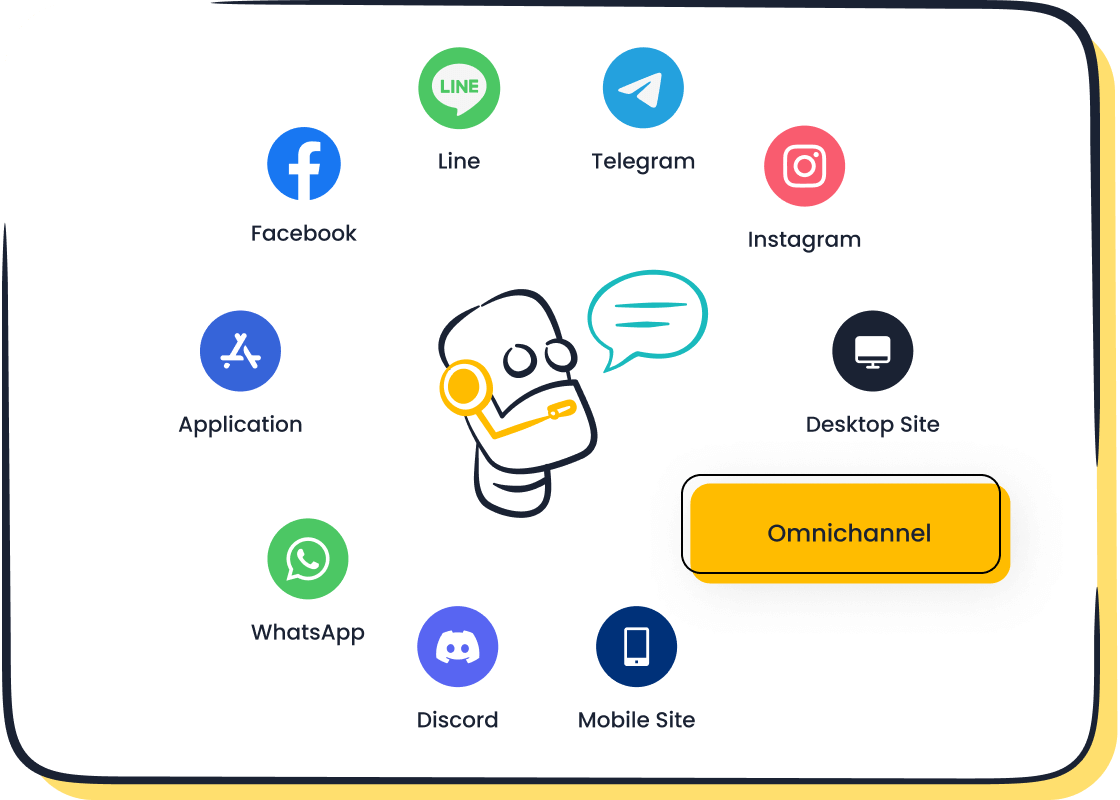
Key features of Sobot chatbots include:
- Natural language understanding for accurate and contextual responses.
- Intelligent routing that escalates complex cases to live agents.
- Proactive engagement with customers through triggered messages.
- Multi-language support for global reach.
- Customizable chatbot flows to match brand voice and business needs.
- Robust analytics and reporting with over 150 performance indicators.
- Integration with CRM systems, knowledge bases, and third-party tools.
- Comprehensive ticketing system for efficient issue tracking.
- Sentiment analysis to monitor customer satisfaction.
- Secure, compliant AI with role-based access control.
- Scalability to support businesses of any size.
Sobot’s Five-AI system covers every customer touchpoint, offering scenario-based AI tailored for ecommerce. The platform uses generative AI powered by advanced large language models, ensuring high accuracy and flexibility. Companies using Sobot have seen a 57% increase in repurchase rates and improved operational efficiency.
Sobot’s chatbots help brands enhance customer experiences by providing instant, reliable support and reducing operational costs.
Omnichannel Support
Omnichannel support stands at the core of Sobot’s customer service automation. The platform unifies all customer interactions—chat, email, voice, SMS, and social media—into a single timeline. This approach allows agents to view the full conversation history instantly, which shortens response times and improves service quality.
- 45% of consumers expect their issues resolved in a single contact.
- 70% of consumers believe companies using AI provide better support.
- Sobot’s AI copilots summarize conversations, detect sentiment, and suggest responses, helping agents resolve issues faster.
- Hybrid chat flows can cut first response times in half and boost customer satisfaction by 10-15 points.
Samsung Electronics, for example, used Sobot to unify its communication channels. This reduced the need for agents to switch platforms and cut down repetitive tasks. As a result, Samsung achieved a 97% customer satisfaction rate and a 30% increase in agent efficiency.
Omnichannel support ensures customers receive consistent, personalized service wherever they reach out, building trust and loyalty.
Case Study: Michael Kors
Michael Kors, a global luxury fashion brand, transformed its customer service and marketing with Sobot’s all-in-one platform. The company faced challenges with fragmented communication and slow response times. By integrating Sobot, Michael Kors unified all customer reception channels, including phone, chat, and social media, into a single system.
The results were impressive:
- Response time dropped by 83%.
- Customer satisfaction reached 95%.
- Conversion rates increased by 20%.
Sobot’s WhatsApp API allowed Michael Kors to send verified bulk messages, improving open rates and customer engagement. The integration of live chat with ticketing and CRM systems enabled agents to access complete customer data, leading to more personalized service. Michael Kors now delivers a seamless, automated customer service experience that supports both sales and support goals.
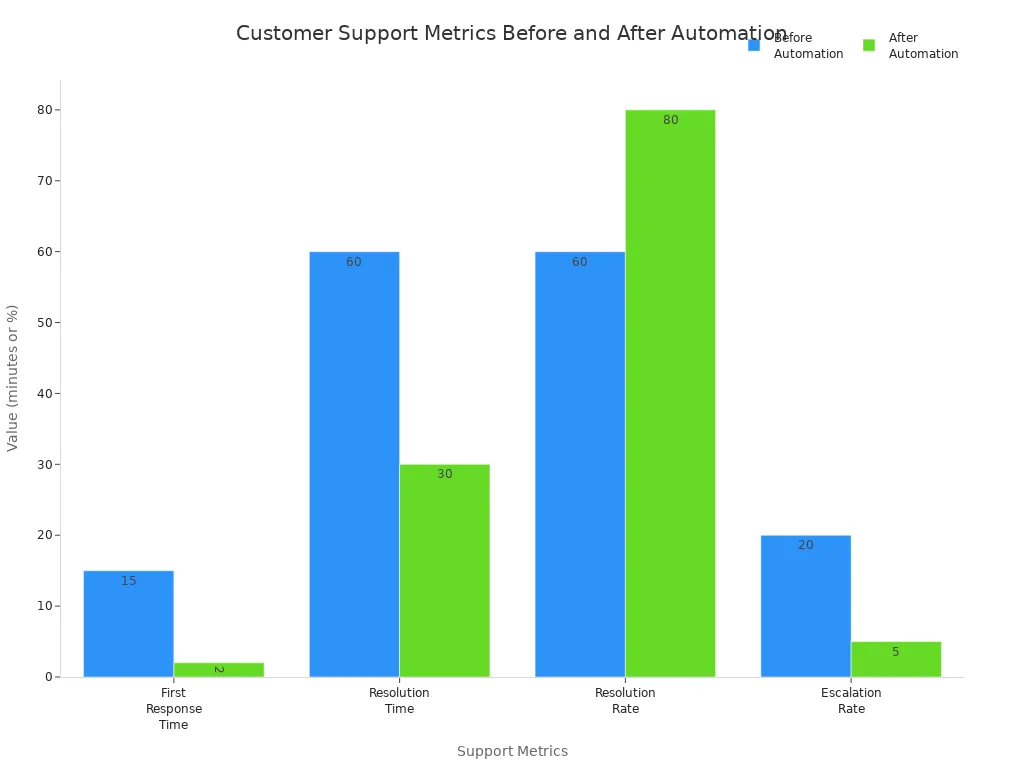
Michael Kors’ success with Sobot highlights the value of automation in reducing response times, increasing satisfaction, and driving sales growth.
Marketing Automation
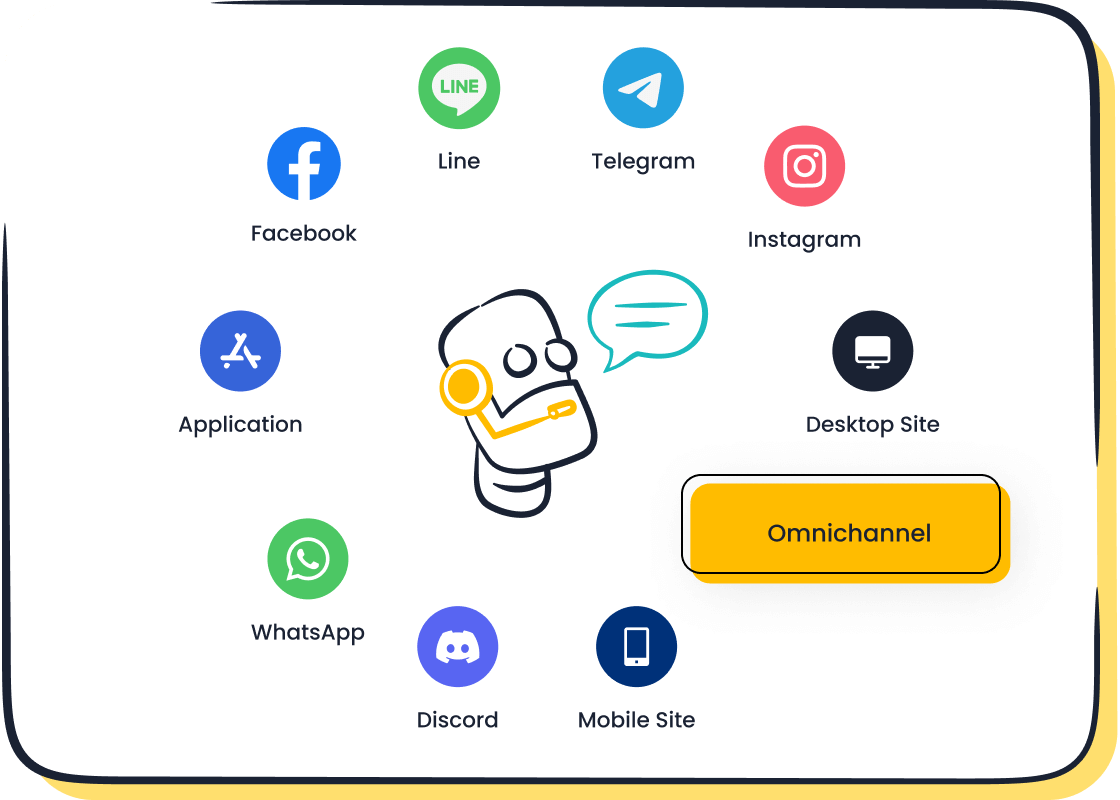
Personalization Engines
Personalization engines have become essential in ecommerce marketing automation. These platforms use AI and machine learning to deliver personalized marketing at scale. Leading solutions like Constructor, Dynamic Yield, and Bloomreach analyze real-time behavioral data to create smart recommendations for each shopper. For example, Petco saw a 13% increase in conversion rates after using Constructor’s dynamic product recommendations. These engines collect data from clicks, searches, and purchase history, then use it to power hyper personalization and relevant product suggestions.
Top personalization engines, such as Salesforce Marketing Cloud Personalization Builder and Oracle Responsys, leverage CRM data and predictive analytics to build customer journeys across channels. Brands like Amazon and Netflix use these systems to offer tailored recommendations, which increases sales and customer loyalty. When choosing a personalization engine, businesses should consider integration, scalability, and data privacy. Sobot’s AI-driven platform supports personalized marketing by unifying customer data and enabling smart recommendations across chat, email, and social media. This approach helps brands deliver dynamic product recommendations that boost engagement and conversions.
Tip: Personalization engines not only improve conversion rates but also increase average order value and customer retention.
Automated Campaigns
Automated campaigns transform how brands engage with customers. Marketing automation tools schedule and send personalized messages, such as birthday discounts or abandoned cart reminders, without manual effort. These campaigns use segmentation and real-time analytics to deliver the right message at the right time. Brands report a 50% higher ROI with multi-channel marketing automation compared to manual campaigns (source).
| Strategy/Feature | Description | Impact on Engagement and Sales |
|---|---|---|
| Cross-Channel Automation | Personalized emails, SMS, and social retargeting | Consistent messaging, higher loyalty |
| Event-Based Campaigns | Targeted offers for launches and promotions | Timely engagement, improved conversions |
| Real-Time Analytics | Dashboards for tracking sales and campaign performance | Data-driven decisions, increased sales |
Sobot’s marketing automation features help brands automate key moments, nurture leads, and analyze campaign results. Automated workflows streamline collaboration between marketing and sales teams, while smart recommendations drive repeat purchases. By using marketing automation, businesses can humanize interactions at scale and build lasting customer relationships.
Payment and Fraud Automation
Secure Payment Solutions
Online retailers in 2025 rely on secure payment solutions to protect transactions and customer data. Payment automation platforms like REDA Pay streamline financial operations by integrating with CRM workflows. These systems focus on control and security, helping businesses avoid financial losses and reputational damage from fraud or data breaches.
Key features of secure payment automation include:
- Integration with CRM and order management systems for seamless payment processing.
- Automated repetitive tasks, reducing manual errors and improving efficiency.
- Advanced security controls to safeguard sensitive financial information.
Modern payment systems use several technologies to ensure safety:
- EMV terminals with chip technology for in-person payments.
- Dynamic two-factor authentication (2FA) and encryption for digital wallets such as Skrill and Venmo.
- SSL/TLS encryption for online payment gateways.
- Mobile payments like Apple Pay and Google Pay use biometric authentication and tokenization.
- Blockchain technology records transactions in a decentralized way, increasing transparency.
Note: Businesses that invest in secure payment automation can reduce the risk of fraud and improve customer trust.
Fraud Detection Tools
Fraud detection tools have become essential for ecommerce automation. These tools use AI-driven technologies, including supervised and unsupervised machine learning, deep learning, and behavioral analytics. Supervised models flag transactions that match known fraud patterns, while unsupervised models detect new types of fraud by identifying unusual activity.
Deep learning analyzes customer behavior, purchase history, and device usage to find hidden fraud risks. AI-powered malware and phishing detection systems now achieve detection rates between 80% and 92%, far better than older methods. Behavioral analytics monitor user actions, such as browsing and login patterns, to spot suspicious changes.
AI systems can automate up to 85% of security alert responses, allowing faster threat mitigation. For example, Shopify uses AI models trained on billions of transactions for real-time fraud detection. The US ecommerce fraud detection market continues to grow as more businesses adopt cloud-based AI and automation for real-time insights and predictive analytics (source).
Tip: Combining payment automation with advanced fraud detection tools helps retailers protect revenue and maintain a secure shopping environment.
Comparing Ecommerce Automation Tools
Feature Comparison
Online retailers in 2025 have many automation tools to choose from. Each tool offers unique features that help businesses improve efficiency, customer service, and marketing automation. The table below compares leading solutions based on integration, AI capabilities, scalability, ease of use, and cost-effectiveness. Sobot stands out for its all-in-one contact center, AI-driven chatbots, and strong omnichannel support.
| Tool | Integration Potential | AI Capabilities | Scalability | Ease of Use | Cost-Effectiveness | Notable Features |
|---|---|---|---|---|---|---|
| Sobot | High (CRM, ERP, social, WhatsApp) | Advanced (chatbots, recommendations, analytics) | Enterprise-ready | No-code setup | High | Omnichannel, multilingual, ticketing |
| Cin7 | 700+ platforms | Predictive analytics | Flexible | Visual builder | Moderate | Inventory, order workflows |
| Latenode | API connectors | Workflow automation | Flexible | No-code | Very high | Visual workflow builder |
| Atom8 | Shopify native | Order processing | SMB focus | Simple | High | Inventory, customer lifecycle |
| Omnisend | Ecommerce platforms | Product recommendations | Growing | User-friendly | High | Omnichannel marketing automation |
Key features that set top tools apart include integration with multiple platforms, AI-driven recommendations, and the ability to automate complex workflows. Sobot’s platform combines these strengths, helping brands deliver personalized experiences and efficient support.
Choosing the Right Solution
Selecting the best ecommerce automation tool requires careful planning. Retailers should consider several factors:
- Integration capabilities: The tool must connect with existing ecommerce, payment, and business systems.
- Scalability: Choose a solution that grows with the business.
- Ease of use: No-code or low-code builders help teams launch automations quickly.
- Support and training: Providers like Sobot offer resources to help teams succeed.
- Cost structure: Pricing should match the business budget and expected return.
Retailers should start by automating high-volume, simple tasks such as order confirmations or inventory updates. Gradual implementation helps teams adapt and reduces resistance. Clean data and clear process documentation improve automation results. Businesses should also balance automation with human interaction to keep customer experiences personal.
Tip: Engage employees early, provide training, and monitor results to ensure smooth adoption. Use analytics and recommendations from the platform to optimize workflows and marketing automation over time.
Ecommerce automation tools have reshaped the online retail landscape in 2025. Businesses now use automation to process orders quickly, deliver 24/7 customer support, and personalize marketing at scale. Sobot’s AI-driven platform helps brands unify channels and boost customer satisfaction. Companies benefit from:
- Instant responses and personalized campaigns that drive engagement.
- Dynamic pricing and loyalty programs that increase competitiveness.
- Real-time fraud detection and SEO automation for secure, visible online operations.
To stay ahead, retailers should:
- Set clear goals and identify key areas for automation.
- Choose tools that fit business needs and integrate easily.
- Train teams and monitor results for continuous improvement.
Adopting the right ecommerce automation tools ensures future growth, operational efficiency, and a seamless online experience.
FAQ
What are ecommerce automation tools?
Ecommerce automation tools help online stores complete tasks automatically. These tools manage orders, send marketing messages, and answer customer questions. For example, Sobot’s AI chatbot can handle 70% of regular queries, saving time and reducing costs for businesses.
How do ecommerce automation tools improve customer support?
Ecommerce automation tools like Sobot provide 24/7 support through chatbots and unified inboxes. These tools answer questions instantly and route complex issues to agents. Michael Kors used Sobot to cut response times by 83% and boost satisfaction to 95%.
Are ecommerce automation tools secure?
Most ecommerce automation tools use strong security features. Sobot, for example, offers GDPR compliance, data encryption, and role-based access. These features protect customer data and help businesses meet global privacy laws. Security remains a top priority for all leading platforms.
Can ecommerce automation tools increase sales?
Yes. Ecommerce automation tools send personalized offers, reminders, and product recommendations. Sobot’s AI-driven platform helped brands like Michael Kors increase conversion rates by 20%. Automated campaigns and smart recommendations drive more purchases and repeat business.
How should a business choose the right ecommerce automation tools?
Businesses should check integration options, scalability, and ease of use. Sobot offers no-code setup, omnichannel support, and strong analytics. Companies should start with simple automations and expand as they grow. Clear goals and training help teams succeed.
Tip: Review case studies and request demos to see how ecommerce automation tools fit your needs.
See Also
Best Live Chat Solutions For Online Stores In 2024
Ways Live Chat Tools Increase Ecommerce Revenue Effectively
Comparing The Leading Live Chat Platforms Including Shopify
Enhancing Ecommerce Customer Experience With Chatbot Technology
